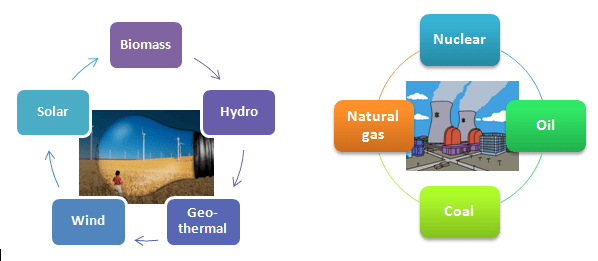Energy of a body is the capacity to do work. Thus, anybody which can do work possesses energy. Our all activities depend on energy. For example, we need energy for cooking food, lighting, transportation, running machines and above all to live. Mainly energy is obtained by burning of fossil fuels like coal, petroleum and natural gas. But these sources of energy are finite and one day all these sources will get exhausted. This fear of running out of fossil fuel reserves has led the scientists to discover various alternative sources of energy such as nuclear energy, hydro energy, wind energy, tidal energy, solar energy, geothermal energy and bio energy etc. In this chapter we will discuss about various sources of energy available to us.

Classification of Sources of Energy
All the sources of energy can be classified into renewable energy and non-renewable sources of energy. Those sources of energy which are inexhaustible and can be regenerated again and again are called renewable sources of energy. The important examples of renewable sources of energy are: solar energy, wind energy, hydro energy, ocean energy, geothermal energy and bio energy.
It should be noted that although wood is a renewable source of energy but the use of wood as fuel is not advised because generally a plant takes more than 15 years to mature. Thus, replenishment of loss of wood takes place in very long time. Also cutting of forests on large scale to obtain food is creating many environmental problems.
Those sources of energy which are exhaustible and cannot be regenerated again are called non-renewable sources of energy. These sources of energy are also known as conventional sources of energy. All the fossil fuels like coal, petroleum and natural gas are examples of non-renewable sources of energy.
Test Your Understanding and Answer These Questions:
- What is energy?
- What are renewable sources of energy? Give examples.
- What are nonrenewable sources of energy? Give examples.
